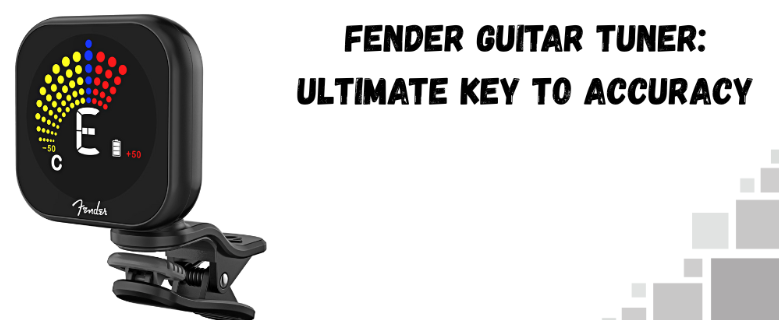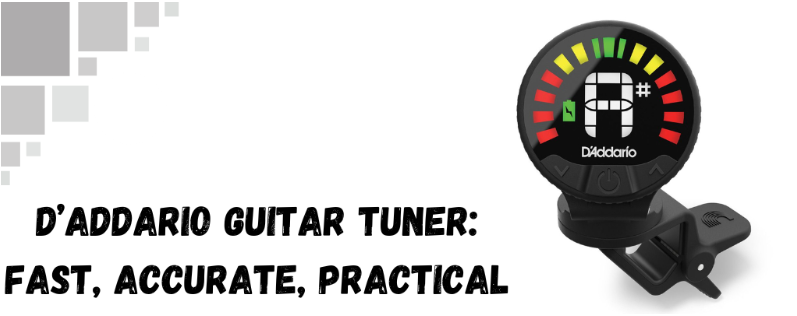Best Guitar Tuners of 2025: Top Picks for Accuracy & Ease

Every guitarist, no matter how good, has faced this: you sit down to play, strum a chord, and it just sounds… off. Nine times out of ten, the problem isn’t your technique, it’s your tuning. A solid tuner fixes that instantly, and once you’ve used a reliable one, you’ll never go back to guessing by ear or fiddling with a cheap, inaccurate gadget.
The truth is, tuners have improved a lot over the past few years. They’ve gotten faster, more precise, and a whole lot easier to use. By 2025, the number of great options is big; still, two models are worth consideration due to their combination of quality and utility: Fender Original tuners and the D’Addario Eclipse Headstock tuner. They are doing the same job but in highly different ways, and which one best suits you depends on how and where you play.
Fender Original Tuners: Classic Craftsmanship with Modern Accuracy
Fender is one of those names in music that instantly carries weight, and their tuners show why. They’re not flashy, but they’re built with care — and you can feel it the second you use them.
Mechanism and Accuracy
The gear ratio here is precise, so the smallest turn of the peg actually makes a predictable difference. If you’ve ever fought with tuners that feel “slippery,” you’ll notice the contrast immediately. These do not miss or overshoot; they allow you to adjust the pitch till it is perfectly on pitch, and this is what you want when recording or live performing.

Durability and Stability
A lot of tuners hold fine when you’re noodling at home but slip under real tension. Fender’s Originals don’t. They’re made from strong materials that keep your strings in check even when you’re bending, strumming hard, or playing long sets.
Design Suitability
Looks aren’t everything, but it’s worth saying: these tuners match just about any guitar. On a vintage instrument, they blend right in. On a modern build, they don’t look out of place either. That flexibility makes them a safe bet for players with multiple guitars.
User Experience
What players mention most often is the feel. There’s a certain resistance when you turn them — smooth but firm — that makes you trust the adjustment. It’s subtle, but once you get used to it, you’ll know exactly what people mean when they talk about “quality hardware.”
D’Addario Eclipse Headstock Tuner: Compact, Fast, and Practical
If Fender’s approach is about tradition and solid engineering, the Eclipse is the opposite: small, clever, and completely modern. It’s the tuner you clip on, forget about, and rely on whenever you need it.
Accuracy and Speed
The Eclipse responds quickly, which is great if you’re tuning between songs. No waiting, no lag — you pluck a string and see where you stand instantly.
Display and Visibility
The screen is bright and clear, and since it rotates, you can read it at any angle. On dark stages, you don’t have to squint. Outdoors, the sunlight doesn’t wash it out. That sounds minor, but in the moment, it’s a lifesaver.

Portability and Ease of Use
Because it clips right to the headstock, there’s no setup. No cables, no pedalboard space required. It doesn’t get in the way of your playing or your guitar’s look, and you can stash it in your case pocket when you’re done.
Versatility
It is popular with guitarists, but not only with guitar. The Eclipse has the capability to support bass and other stringed instruments as well, and so is a good option when you play more than one instrument.
Clip-On vs. Pedal Tuners: What Fits Your Style?
Here’s the quick breakdown:
Clip-On Tuners (like the Eclipse): They detect vibrations directly from the guitar, which means background noise doesn’t mess with them. That makes them perfect in loud rooms or jam sessions. Plus, they’re small and portable.
Pedal Tuners: These sit right on your pedalboard, and most mute your signal while you’re tuning. That’s huge in live settings, where you don’t want the crowd hearing every off-pitch pluck. Some even include strobe or advanced modes for extra accuracy.
Neither format is “better.” It just comes down to whether you value portability or pedalboard integration more.
What to Look for in Any Tuner
No matter which style you lean toward, keep these in mind:
Precision: Look for tuners accurate to ±1 cent. Anything less won’t cut it for serious use.
Display: Bright and easy-to-read, saves headaches on stage or in the studio.
Durability: A tuner must resist travel, practic,e and gig abuse.
Ease of Use: This is because when it involves too many steps, you will not use it. Simplicity is key.
Final Thoughts
The Fender Original Tuners and the D’Addario Eclipse Headstock Tuner represent two different approaches to the same problem — and both succeed. Fender’s option is built into your guitar itself, steady and reliable, while the Eclipse gives you portability and speed in a compact clip-on design.
Neither one will steer you wrong. It just depends on how you play. If you want a classic, durable solution that feels as good as it performs, Fender has you covered. If you’d rather keep things lightweight, flexible, and quick, the Eclipse is hard to beat.
At the end of the day, the right tuner doesn’t just save you time — it makes your playing sound better, period. Because when your guitar is in tune, everything else falls into place.
Here you can also find amazing drum thrones; alternatively, browse our product page to find the best keyboard bench, audio mixers, drum mics, piano bench, keyboard stand, speakers, party speakers, and more.








